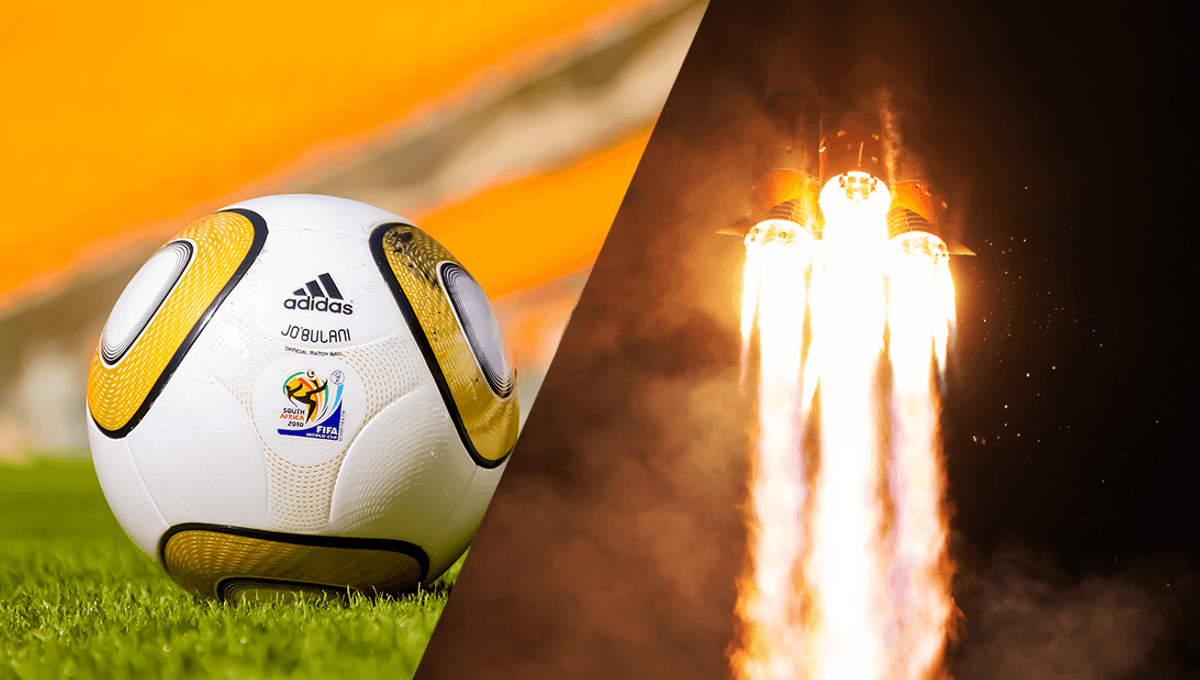
If you’re old enough to remember the 2010 World Cup in South Africa, you will likely remember the controversy that year surrounding the official ball of the tournament.
Developed by Adidas, the Jabulani (“be happy” or “to celebrate” in Zulu) was supposed to be an improvement on the 2006 ball, using new methods.
“The newly-developed ‘Grip’n’Groove’ profile provides the best players in the world with a ball allowing an exceptionally stable flight and perfect grip under all conditions,” Loughborough University, who helped develop the ball, explained in a statement ahead of the World Cup. “Comprising only eight, completely new, thermally bonded 3-D panels, which for the first time are spherically moulded, the ball is perfectly round and even more accurate than ever before.”
While initial testing by football players yielded acceptable results, when it came to the World Cup the ball was highly controversial. It would swerve in the air unpredictably, and was not well liked by strikers or goalkeepers of the tournament.
“It’s terrible, horrible,” Brazil’s Julio Cesar complained at the time. “It’s like one of those balls you buy in the supermarket.”
“It’s very weird,” Brazil striker Luis Fabiano added. “All of a sudden it changes trajectory on you. It’s like it doesn’t want to be kicked. It’s incredible, it’s like someone is guiding it. You are going to kick it and it moves out of the way. I think it’s supernatural, it’s very bad. I hope to adapt to it as soon as possible, but it’s going to be hard.”
Not everybody was displeased with it, with some enjoying the unpredictability it brought to the game.
“They’re doing anything but staying in my gloves,” England goalkeeper Joe Hart said. “It’s hard work with them, but good fun. It makes the game exciting and I think that’s what they are trying to do with it.”
“The ball is dreadful,” fellow England goalkeeper David James added. “It’s horrible, but it’s horrible for everyone.”
So, why exactly was it so unpredictable in the air? Fortunately, US space agency NASA stepped in to investigate. NASA scientists at the Fluid Mechanics Laboratory at NASA’s Ames Research Center subjected the ball to a number of laboratory tests including wind tunnels, ahead of discussion of aerodynamics with an audience of students.
“It’s quite obvious. You’re seeing a knuckle-ball effect,” Rabi Mehta, an aerospace engineer at NASA Ames, explained in a statement.
When a smooth ball like the Jabulani flies through the air without much spin on it, the air close its surface is affected by the ball’s seams, producing an asymmetric flow, which in turn produces the unpredictable swerves and swoops. Through testing, Mehta believes that the knuckle-ball effect kicked in at around 72–80 kilometers per hour (45 to 50 miles per hour), which wasn’t ideal given that that is roughly the speed the ball moves at during a free kick near the goal.
Older balls are less smooth than they are today, making them less inclined to knuckle.
“The newer balls have a smoother surface. In the past, the soccer ball had a rougher surface, making the knuckling speed about 30 mph [48 kilometers per hour],” Mehta added. “Today, the ball starts to knuckle, or go wobbly, at a speed of 45 – 50 mph.”
So at higher speeds, the ball started to act unpredictably. Making it more complicated still, a lot of the 2010 World Cup games were played at high altitude. The density of air is lower at higher elevations, meaning that there is less drag acting on it, while there is also less lift, meaning it is less likely to swerve. But wind is another factor altering play.
“It’s relative speed that matters,” Mehta added. “If you have a 20 mph headwind, and you kick the ball at 20 mph, the ball is really going 40 mph. With a strong cross wind, you can make the ball curve without putting much spin on it. Wind is an important factor in all ball sports.”
On top of this, the ball’s lack of panels likely played its part too.
“The more panels you have, the more seams you have on the ball, and that affects surface roughness,” Mehta continued. “The surface roughness in turn affects the speed at which the ball will knuckle.”
The result was an unpredictable World Cup, where the ball could fly high into the sky unexpectedly during play, or swerve erratically past a confused goalkeeper. While a lot of the players may not have been fans, it was certainly entertaining to watch.
Source Link: Adidas Jabulani: The World Cup Football So Bad NASA Decided To Study It